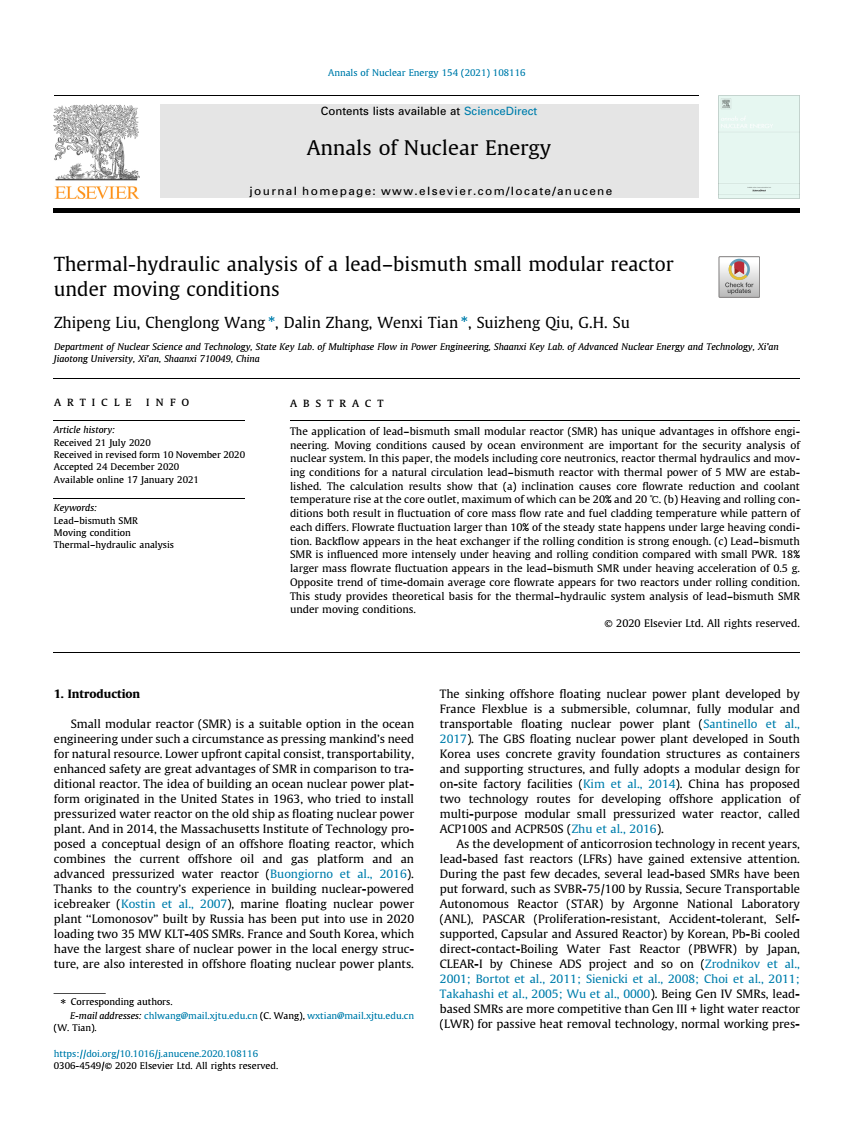名称 : Thermal-hydraulic analysis of a lead-bismuth small modular reactor under moving conditions
发表日期 : 2021-01-17
摘要 : The application of lead-bismuth small modular reactor (SMR) has unique advantages in offshore engineering. Moving conditions caused by ocean environment are important for the security analysis of nuclear system. In this paper, the models including core neutronics, reactor thermal hydraulics and moving conditions for a natural circulation lead-bismuth reactor with thermal power of 5 MW are established. The calculation results show that (a) inclination causes core flowrate reduction and coolant temperature rise at the core outlet, maximum of which can be 20% and 20 degrees C. (b) Heaving and rolling conditions both result in fluctuation of core mass flow rate and fuel cladding temperature while pattern of each differs. Flowrate fluctuation larger than 10% of the steady state happens under large heaving condition. Backflow appears in the heat exchanger if the rolling condition is strong enough. (c) Lead-bismuth SMR is influenced more intensely under heaving and rolling condition compared with small PWR. 18% larger mass flowrate fluctuation appears in the lead-bismuth SMR under heaving acceleration of 0.5 g. Opposite trend of time-domain average core flowrate appears for two reactors under rolling condition. This study provides theoretical basis for the thermal-hydraulic system analysis of lead-bismuth SMR under moving conditions.
网址 : https://doi.org/10.1016/j.anucene.2020.108116
领域 : 核反应堆热工水力
出版公司 : Annals of Nuclear Energy
出版国家 : GB
重点项目名称 : 新型海洋核反应堆技术
项目所属数据集 : 深海铅铋堆安全评价及策略研究数据集






















